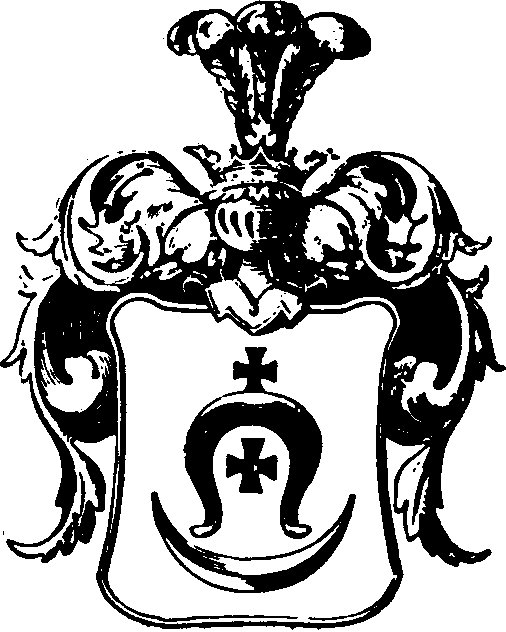Herb Bozawola
Research Heraldry Herb Bozawola
Herbarz Polski translation
Bozawola herb
 The following is a direct translation from the classical genealogical and heraldic reference "Herbarz Polski" by Kasper Niesiecki, S. J., Lipsk edition, 1839-1846. Translated by William F. Hoffman.
The following is a direct translation from the classical genealogical and heraldic reference "Herbarz Polski" by Kasper Niesiecki, S. J., Lipsk edition, 1839-1846. Translated by William F. Hoffman.
A true Lubicz, i. e., it should have a white Horseshoe, its ends turned downward, with two crosses, one above the horseshoe, the other inside it, but below this is added a yellow half-moon encompassing the horseshoe, edges pointed upward, on a blue field, with three ostrich feathers on the helm. Bielski, fol. 134. Paprocki o herbach, fol. 345. In Stromat. Okolski tomo 1. fol. 67. From the similarity of these arms to those of Lubicz, all conclude that one of the Lubicz clan earned them on the following occasion. When spies warned him in the dead of night of nearby enemies, he attacked them so safely that the passing night held no threat of danger. He fell upon the foe, soundly asleep, and mowed them down; and the rising moon helped him to this victory, so a Mazovian prince added it to his ancestral arms and named him "Bozawola." Rev. Rutka derives from a certain manuscript the occasion of these arms' bestowment in the days of the Polish prince Krakus, when the Commander fortunately led all his people across the frozen Danube to Moguncya [Mainz], for which he was awarded these arms.
Bearers of these Arms:
Gasecki, Gosciminski, Jemielicki, Komorowski, Ostrowice, Reymunt, Rzeczkowski
Copyright © 1989 William F. Hoffman. Used by permission. This article originally appeared in Polish Genealogical Society Newsletter (Vol. XII, No. 2, Fall 1989), the bulletin of the Polish Genealogical Society.
;
